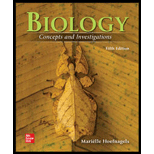
Introduction :
The smallest unit of matter that forms a component of a composite is called a particle. Every
Answer to Problem 1MCQ
Correct answer :
The correct answer is option (c) 0;0;1.
Explanation of Solution
Explanation/justification for the correct answer :
Option (c) 0;0;1. 1 H+ alludes typically to a decidedly charged particle of a hydrogen molecule, consequently an iota from which one electron is taken out. Since H particles comprise one proton and one electron, if one eliminates the electron, one is left with a proton. In this way, 1 H+, as a rule, alludes to only one proton left when the hydrogen iota's electron was taken out or uprooted. So, the correct answer is option (c).
Explanation for incorrect answer :
Option (a) 1;0;2. The simplest particles, consisting of just one proton and one electron, are found in the component hydrogen. The core is shaped by the proton, and the electron revolves around it. Any remaining elements, such as helium, contain neutrons in their cores exactly as protons do. In general, the strongly charged protons will repel one another, while the neutrons support the stability of the core. Nuclear mass is determined by the number of protons in the nuclear number and the number of protons in addition to neutrons. Since there is just one proton and no neutrons, hydrogen has a nuclear mass of 1. Thus, it is an incorrect option.
Option (b) 0;1;0. Nuclear mass is determined by the number of protons in the nuclear number and the number of protons in addition to neutrons. Since there is just one proton and no neutrons, hydrogen has a nuclear mass of 1. So, this is an incorrect answer.
Option (d) 1;1;0. Nuclear mass is determined by the number of protons in the nuclear number and the number of protons in addition to neutrons. Since there is just one proton and no neutrons, hydrogen has a nuclear mass of 1.
Want to see more full solutions like this?
Chapter 2 Solutions
Biology: Concepts and Investigations
- In one paragraph show how atoms and they're structure are related to the structure of dna and proteins. Talk about what atoms are. what they're made of, why chemical bonding is important to DNA?arrow_forwardWhat are the structure and properties of atoms and chemical bonds (especially how they relate to DNA and proteins).arrow_forwardThe Sentinel Cell: Nature’s Answer to Cancer?arrow_forward
- Molecular Biology Question You are working to characterize a novel protein in mice. Analysis shows that high levels of the primary transcript that codes for this protein are found in tissue from the brain, muscle, liver, and pancreas. However, an antibody that recognizes the C-terminal portion of the protein indicates that the protein is present in brain, muscle, and liver, but not in the pancreas. What is the most likely explanation for this result?arrow_forwardMolecular Biology Explain/discuss how “slow stop” and “quick/fast stop” mutants wereused to identify different protein involved in DNA replication in E. coli.arrow_forwardMolecular Biology Question A gene that codes for a protein was removed from a eukaryotic cell and inserted into a prokaryotic cell. Although the gene was successfully transcribed and translated, it produced a different protein than it produced in the eukaryotic cell. What is the most likely explanation?arrow_forward
- Molecular Biology LIST three characteristics of origins of replicationarrow_forwardMolecular Biology Question Please help. Thank you For E coli DNA polymerase III, give the structure and function of the b-clamp sub-complex. Describe how the structure of this sub-complex is important for it’s function.arrow_forwardMolecular Biology LIST three characteristics of DNA Polymerasesarrow_forward
 Concepts of BiologyBiologyISBN:9781938168116Author:Samantha Fowler, Rebecca Roush, James WisePublisher:OpenStax College
Concepts of BiologyBiologyISBN:9781938168116Author:Samantha Fowler, Rebecca Roush, James WisePublisher:OpenStax College
 Biology Today and Tomorrow without Physiology (Mi...BiologyISBN:9781305117396Author:Cecie Starr, Christine Evers, Lisa StarrPublisher:Cengage Learning
Biology Today and Tomorrow without Physiology (Mi...BiologyISBN:9781305117396Author:Cecie Starr, Christine Evers, Lisa StarrPublisher:Cengage Learning Biology: The Unity and Diversity of Life (MindTap...BiologyISBN:9781337408332Author:Cecie Starr, Ralph Taggart, Christine Evers, Lisa StarrPublisher:Cengage Learning
Biology: The Unity and Diversity of Life (MindTap...BiologyISBN:9781337408332Author:Cecie Starr, Ralph Taggart, Christine Evers, Lisa StarrPublisher:Cengage Learning





